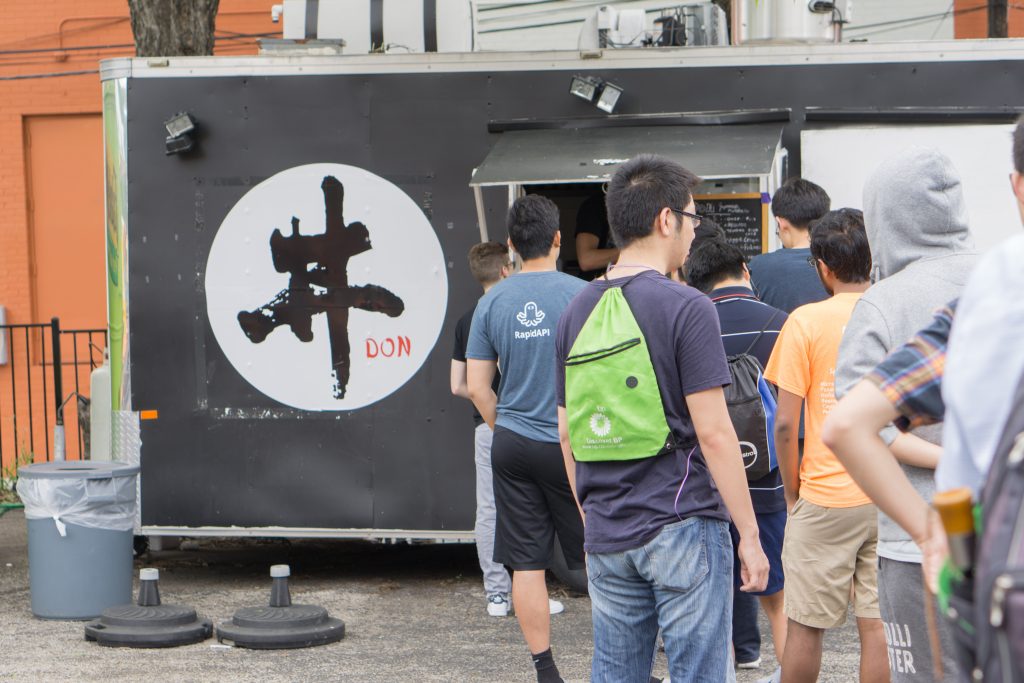
Lined up and ready to order
It’s Sunday, 10 minutes before noon when Don Japanese Food Truck opens and finally begins to take orders. The line has already formed, with about 15 people already in front of me. Within 5 minutes, another 5 people have joined their friends in front of me, and another 20 have arranged themselves behind me. As soon as the clock strikes 12, the orders begin and after 10 minutes of opening, I have at last arrived at the window to order. The owner, Edward Sumner, greets me with a “Good afternoon, soldier,” as he always has and I make the order I usually get, “The Karaage.”
Since opening in the fall of 2015, Don has gained a wild following, frequently selling out early. Their hours would shift from the 12-8 pm they originally planned to realistically 12-5 pm at their old location on 28th and Guadalupe. Within a year, they left their original location due to the landowner increasing the rent and moved to behind the University Coop where their hours are now a short 12-3 pm.

A picture of the menu right before it fell to its demise
The menu originally was a shorter list of 5 rice bowls, growing into the menu most people know today with 8 rice bowls alongside an assortment of add-ins, including tempura fish cake, fish katsu, veggie croquette, and shrimp fry. The menu caters to all sorts of people with different diets as a variety of meats are represented (or lack thereof). Here lays the final menu preserved for the rest of the world to see.
The Food
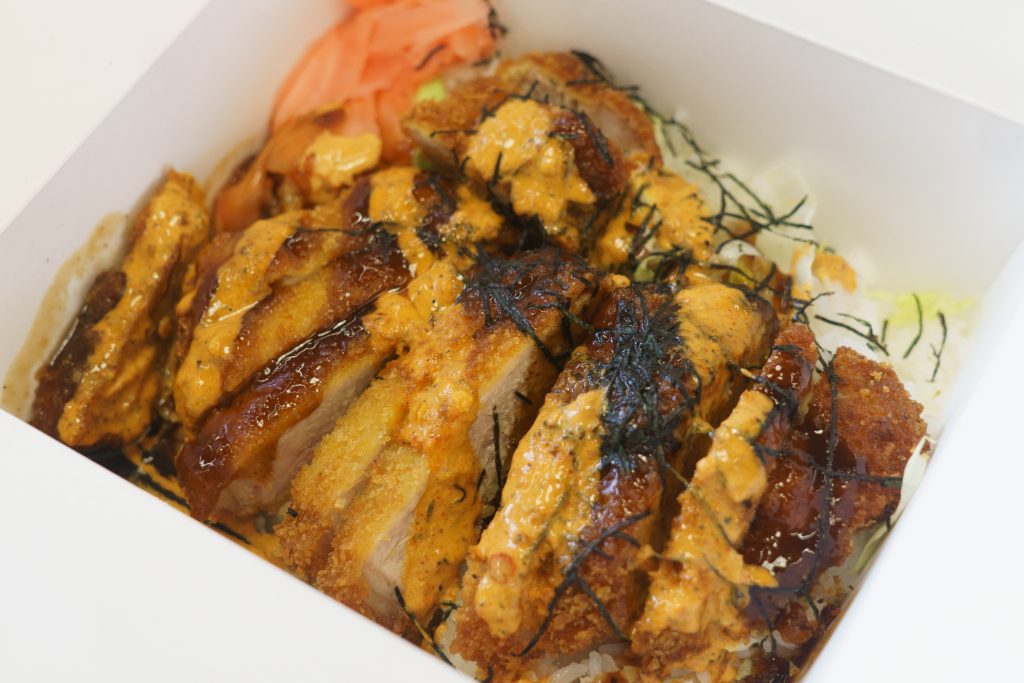
The Don ($5)
The namesake of the truck as it is the quintessential pork cutlet rice bowl. It is the Don team’s number one recommendation for newcomers to Japanese cuisine. The succulent pork is encased in a panko crust that has a satisfying crunch.
Ingredients: Breaded fried pork cutlet, special sauce, (spicy) mayonnaise, dried seaweed, lettuce, rice, ginger on the side
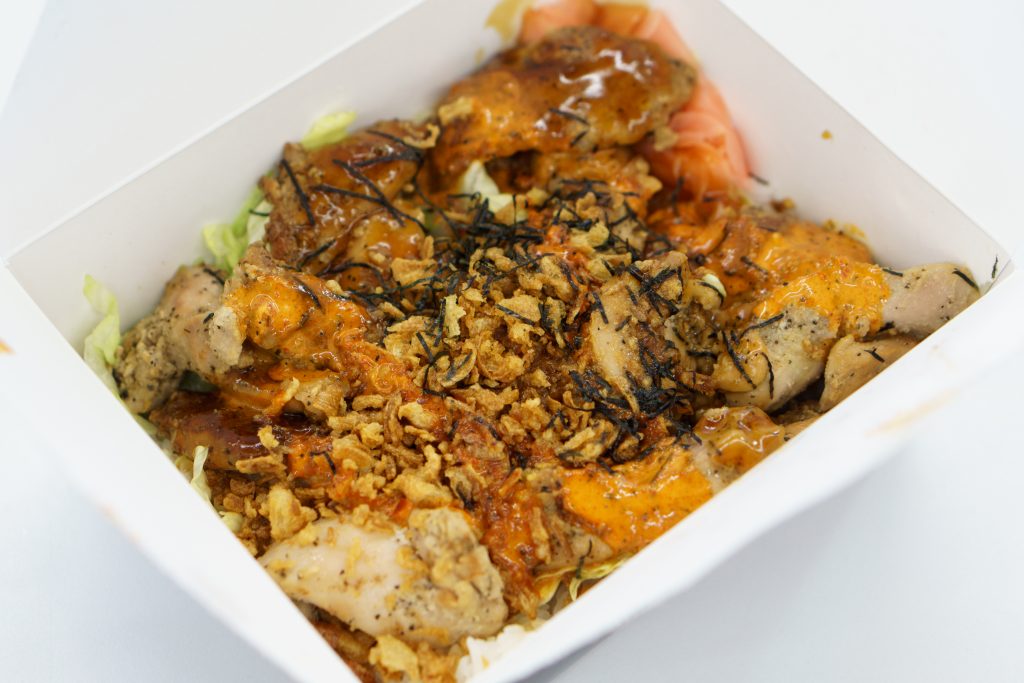
The Chicken ($5)
Next up on the menu is a different kind of protein, chicken. Unlike “The Don,” the chicken is instead pan-seared and topped with fried shallots to add some texture to the rice bowl rather than the panko crust that some of the other rice bowls feature. Some sweetness comes from the teriyaki sauce that is drizzled onto the chicken at the end.
Ingredients: Pan-seared chicken, fried shallots, teriyaki sauce, (spicy) mayonnaise, dried seaweed, lettuce, rice, ginger on the side
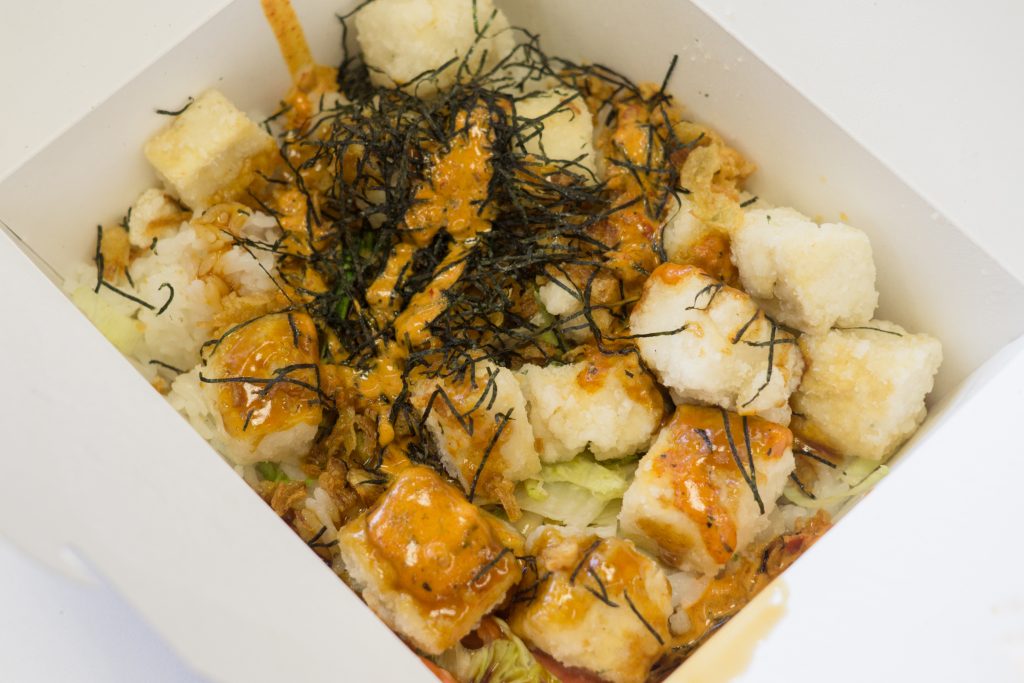
The Veggie King ($5)
The option for those who aren’t keen animal-eaters or just want to try something different. The rice bowl features tofu which has been dusted with starch and then fried for crispness. The tofu’s insides remain soft and sweet which is unlike the saltier and heavier bowls on the menu.
Ingredients: Fried agedashi tofu, fried shallots, teriyaki sauce, (spicy) mayonnaise, dried seaweed, a bed of lettuce, rice, ginger on the side

The Beef ($7)
A rice bowl for the beef lovers out there. The hearty beef has a teriyaki flair alongside the freshness of the lettuce. Each bite of the ground beef packs a sweet but spicy punch in addition to the already very spicy mayonnaise. This bowl in particular is unlike most Japanese beef bowls as beef bowls in Japan typically feature shaved beef instead.
Ingredients: Teriyaki seasoned ground beef, (spicy) mayonnaise, dried seaweed, a bed of lettuce, rice, ginger on the side

The Pork Belly ($9)
Don’s most expensive rice bowl before the “Chef’s Special” came into the picture. “The Pork Belly” features the fatty and juicy belly of a pig. As it is braised, the meat is extremely soft and tender compared to the other pork rice bowl, “The Don.”
Ingredients: Marinaded pork belly, special sauce, dried seaweed, a bed of lettuce, rice, ginger on the side

The Karaage ($6)
Otherwise known as “Japanese Fried Chicken,” this used to be a side dish until adding rice to the side dish for an extra dollar became so commonplace that it was added as a rice bowl. The outside is coated in starch and then deep-fried for maximum crispness, sealing in the juicy and tender chicken thigh. Each piece is a delightful surprise as they all have a unique texture due to being cut and sized slightly differently.
Ingredients: Fried chicken thigh, special sauce, (spicy) mayonnaise, dried seaweed, a bed of lettuce, rice, ginger on the side
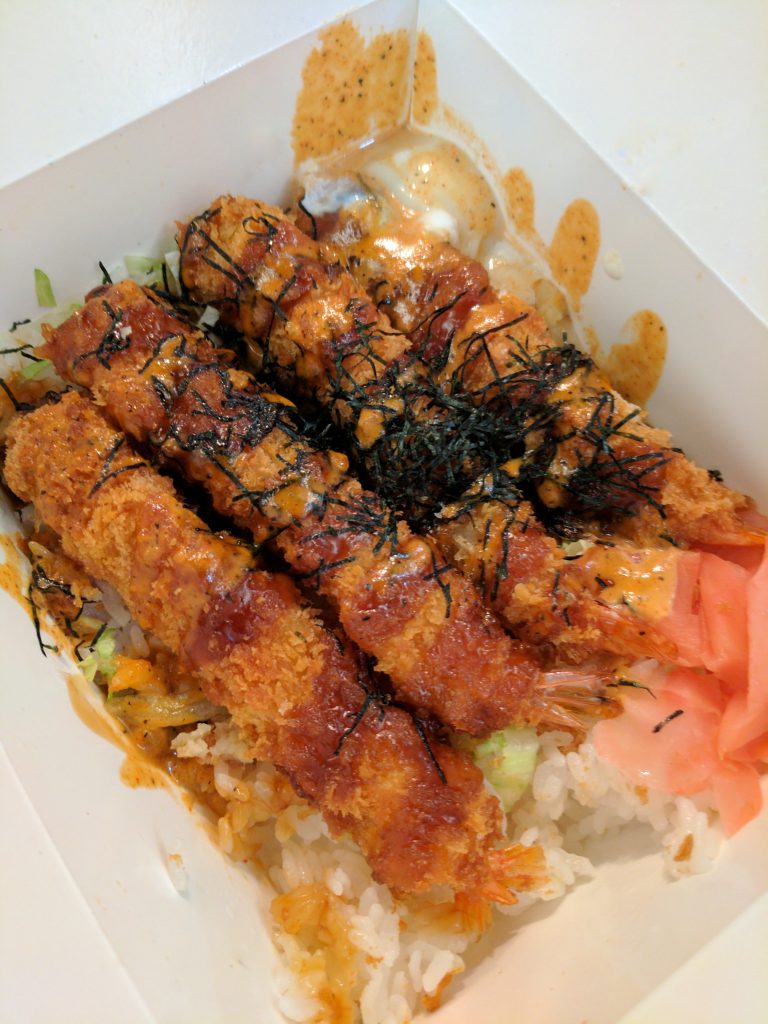
The Blue Ocean ($8)
A rice bowl with a mysterious name that was added to the menu to satisfy the hunger of those who prefer a more briny flavor profile. The protein featured in this dish is 4 large shrimp fried in panko breadcrumbs. The crispy outside contrasts the soft and juicy shrimp on the inside.
Ingredients: Breaded fried shrimp, special sauce, (spicy) mayonnaise, dried seaweed, a bed of lettuce, rice, ginger on the side

Chef’s Special: Fatty Tuna Bowl ($11)
The only rice bowl on their menu that does not feature a protein that has been cooked and instead has the refreshing taste of raw minced tuna. Above the tuna lays an egg that has been pouched for additional umami once it has been popped. The little bits of caviar add an interesting texture as they roll about and explode with intense briny flavor as they are consumed.
Ingredients: Raw minced tuna, onsen egg, sprouts, caviar, wasabi, house-shoyu sauce, rice
“All Good Things Must Come to an End?”
With the completion of first draft of this photo essay came unexpected and sad news. The Don team had announced on Facebook that the food truck was closing for good on April 30th. The comments section was filled with many distraught patrons’ posts, and the announcement was shared over 150 times with over 800 sad Facebook reacts.
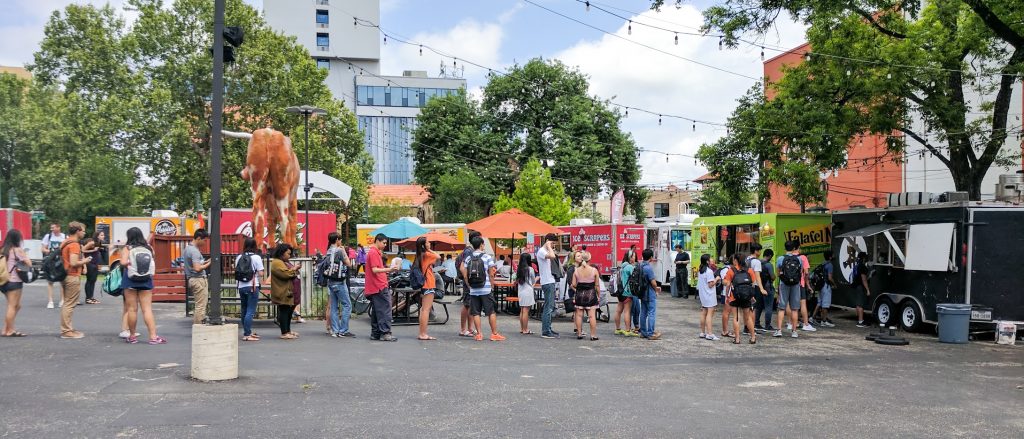
A fraction of what was to come at the very end
The day after the announcement, hundreds of loyal patrons showed up to eat at Don one last time with the line wrapping around the entire lot dedicated to the food trucks. The people who lined up before the food truck had even opened waited up to 3 hours just to get their hands on a rice bowl that had satisfied so many one last time. Until the very end, they tried their best to stay true to the message they had written on their menu originally:
Philosophy: To provide authentic Japanese food at the most reasonable price, without sacrificing customer satisfaction, expediency, depth of flavor or love!
Don had evolved over time to overcome the struggles they have had before. From the original cramped food truck where they frequently had to restock in the middle of their operating hours to the larger food trailer that existed in a far more convenient location behind the University Coop, they had always tried to maintain the same quality. The portions have always been generous for a meal that is below the cost of other restaurants and food trucks in Austin. Because of this, they have had troubles with the demands which exceed the typical food truck, and some customers have complained that the wait is now far too long for a lunch from Don to be worth it. Despite this, Sumner and his team have always gone above and beyond to meet this philosophy and make their patrons happy even with the wait times increasing from a short 15 minutes to sometimes an hour over the past year with the occasional free add-ins and cracking a joke once in a while with their customers. Prior to closing, they have hinted at opening a restaurant, a dream of the Don team. I hope that’s the case as they are already sorely missed.
A portion of this photo essay was used on a Facebook page that I help run, JPop Dallas.










